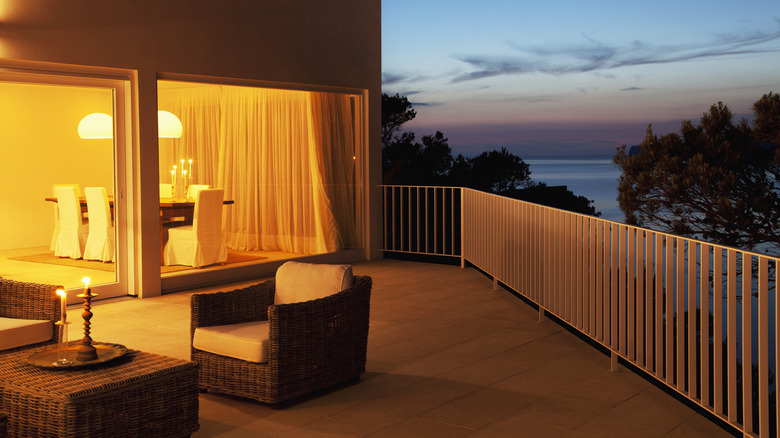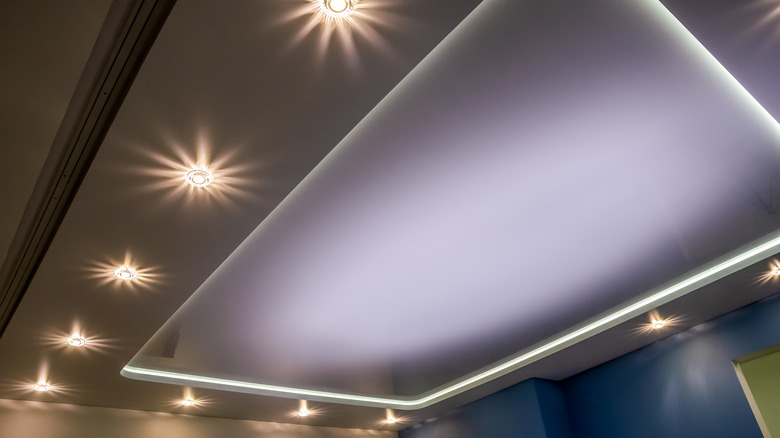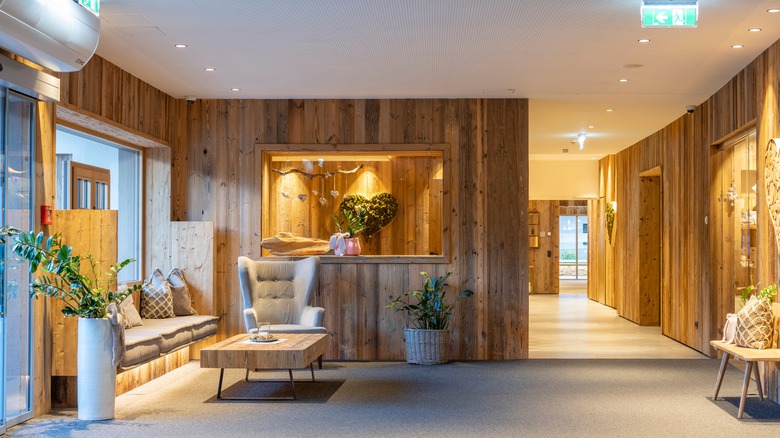The Lighting Mistake That's Making Your Room Feel Smaller
You might be familiar with the different lighting tricks that make a room feel bigger. When used properly, soft colors, mirrors, and natural light can create the illusion of space. Artificial lighting can also positively impact how a room feels, but it comes in many forms, each with its benefits, so you need to know which ones will create your desired result. The two types of lighting you should consider when decorating a room are general and directional. General lights cover the entire space fully, while directional lights can face the floor, ceiling, or other areas.
The room size, the mood you're going for, and what you want to highlight will determine your light type. You should have a layer of warm lights in a bedroom to keep it cozy, for example, but ensure they all have matching temperatures, so they don't clash. However, artificial lighting could make your room feel smaller if improperly situated.
Direct lights
While artificial light can make a small room feel more spacious, not all lighting types can achieve this. Big and bright ceiling light fixtures are often used to flood a room so it feels larger. However, they usually create the opposite effect since lights that shine directly down from the ceiling only focus on certain parts of the room, causing an imbalance. The lighting mistake that makes your room feel smaller is when you have directional lights on the ceiling that cause an imbalance and give off more light than the room needs.
Recessed lights are an example of this. They might save space since they aren't conspicuous fixtures, but they will overwhelm an area with light if they are too big for the room. This is why chandeliers don't work in small enclosures, for example. On the other hand, ceiling lights shine in a place like the living room because there's usually a lot of space, which is an excellent setting for an overhead light.
What to use instead
Instead of using ceiling lights that point down, opt for indirect, balanced lighting that spreads around the room evenly. Light sources emanating from the walls, tables, and corners will set the focus on all parts of the room and make it feel more open. If you want recessed lights on the ceiling, you can balance them out with the others. Controlled lighting is another part of the solution. When you have light dispersing through a room, it helps to dim other lighting sources. Creating a cozy atmosphere will make you feel comfortable.
Light fixtures, lampshades, and other accessories also have a part to play. Opt for light, neutral colors to help open up the small room even when the lights aren't on. If the room is small but has a high ceiling, use that to your advantage! High-ceiling pendant lights will draw attention to the abundance of vertical space in the room.


